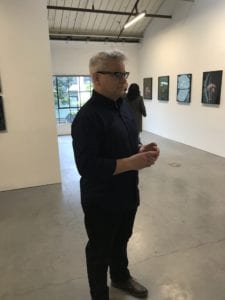
J. John Priola, who lives on Surrey Street only blocks from Glen Canyon Park, was born on a five-acre farm in Colorado where his parents put up field corn for silage and grew sweet corn for more than just their Thanksgiving table.
“My mother sold the corn from a stand,” Priola told the Glen Park News, “but she also cultivated a tree farm. She’d buy blue spruce and ash maple seedlings, plant and prune each and then sell them to landscaper designers.”
Priola spoke soon after a February 7 opening of his Dogpatch show Natural Light,his new photography exhibit mounted at Anglim Gilbert Gallery at 1275 Minnesota Street.
Natural Light remains at Anglim Gilbert through March 9.
Priola’s rural childhood was surrounded by mountains and prairies and they inform his art.
“I was raised around growing things and have always been conscious of nature” said Priola, who has lived in San Francisco since 1985 and has taught at the San Francisco Art Institute since 1996.
Channeling his youth, he continued.
“Plants are an extension of oneself.”
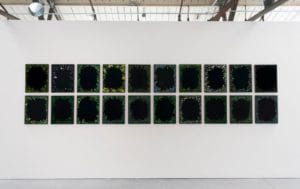
And Priola’s photographs of plants abound in an urban neighborhood, Dogpatch, once rife with meatpacking plants and now boasting an up-and-coming art scene.
“I borrowed house plants from friends or obtained them from estate sales,” said Priola, who then photographed numbers of them beneath his Glen Park studio skylight.
His images and arrangements of synthetic flowers, subtly anthropomorphic, are imbued with human characteristics and offer opportunities to discover people through the objects they cared for.
Priola’s previous body of work consisted of streetscapes where objects were either cast aside on front lawns or are set out as charitable donations.
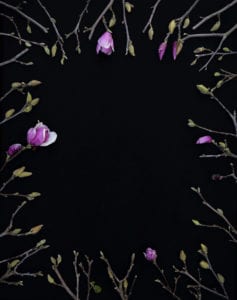
These photographs refer to individuals who place them there.
Natural Light, his sixth gallery solo exhibition, has done nothing less.
Anglim Gilbert has curated Priola’s photographs around themes.
“Grow,” “Poises,” “Foliage,” and “Parasite.”
The photos are mounted individually or in a grid.
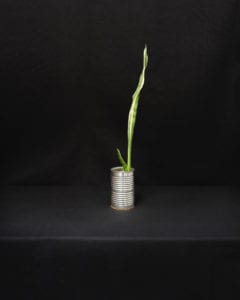
Houseplant Portraits
“Foliage” is one such a grid, taking up an entire gallery wall.
Each of Priola’s nearly two dozen “Foliage” images are tempered with pathos, consisting of a delicate wreath of branches, leaves, or flowers set against a deep black background that centripetally grabs the observer.
“The 20 photographs are born out of beauty and have a sense of deeper feeling of loss and projection,” emailed Priola, who has lived on Surrey Street for 18 years and shown earlier works at the Fraenkel Gallery in the City.
All are haunting in their own peculiar way, softly-lit with deep shadows, entreating the viewer forward, beckoning the onlooker inward.
“I lived through the AIDS crisis and it informs my work,” said Priola, whose influences are Irving Penn, Richard Avedon and Lissette Model. “I lost friends to AIDS and when you look at each photo in the grid it’s the black space, the void, that is meaningful.”
“Posies” and “Grow” take matters to another place, playful even whimsical.
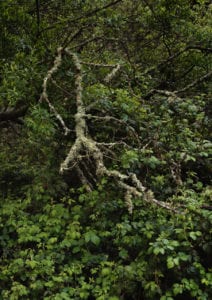
“The synthetic flowers in “Posies” are kitch and funny,” said Priola, who used a digital camera to capture their essence. “Each is a mix of humor, trickery, beauty.”
“Grow” is composed of numbers of subjects culled from friends, one photograph coming from a Surrey Street neighbor.
“The plants can be seen as a portrait of the person through something he or she cared for,” said Priola. “Each is evocative of the habits of people and how things effect people.”
Oscar Wilde in “The Picture of Dorian Gray,” wrote about portraits, offering this: “Every portrait that is painted with feeling is a portrait of the artist, not the sitter.”
Experiencing John Priola’s Anglim Gilbert Gallery exhibit, an art aficionado might find it difficult to argue with the nineteenth century English novelist and playwright.
Priola’s largest photograph is a stand-alone. “Parasite” takes him to his own backyard, Glen Canyon, and, arguably, back to his mile-high, rustic roots where nature morphs Scaramouche-like, both entertaining yet edgy, both friendly yet fierce in its vagaries.
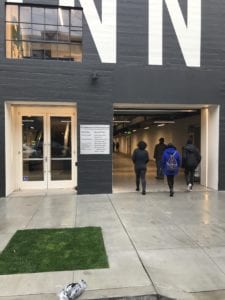
Past the Recreation Center, several yards beyond the owl tree that has intrigued neighborhood parents and children, then half way along Alms Road one can find a lifeless willow limb immersed in quilts of California blackberry. The willow branch is contorted, coated with scabrous lichen, the crust like fungus gnawing at the dormant limb.
Priola passes it each morning, his dog, Harold, a 14-year old Chihuahua-mix in tow.
“The parasite is killing the willow in order to survive,” he offered. “It is just what nature does, what nature is.”
“The colors are soothing, intoxicating, yet something is being choked out.”
Priola’s image seems to encapsulate his fascination with the ever-contrary natural world, both its quirks and somber impassivity, yet he sees “Parasite” working as a bridge connecting his Minnesota Street gallery oeuvre.
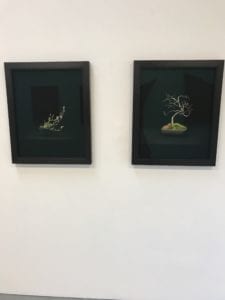
“The polarity of “Parasite,” he explained, “is what is running through the work of this show.”
John Priola’s photography has shown at the University Art Gallery, Berkeley and at the Schirn Kunsthalle, Frankfurt, Germany, and his work is held in numerous museum collections including the Metropolitan Museum of Art, New York, the Art Institute of Chicago, and SF MOMA.
Natural Lightremains at Anglim Gilbert Gallery through the first week of March.
Art lovers can attend, then determine for themselves if the satirist who penned “The Importance of Being Ernest” was correct or not.
Is John Priola’s catalog more about the photographer or about the plants?